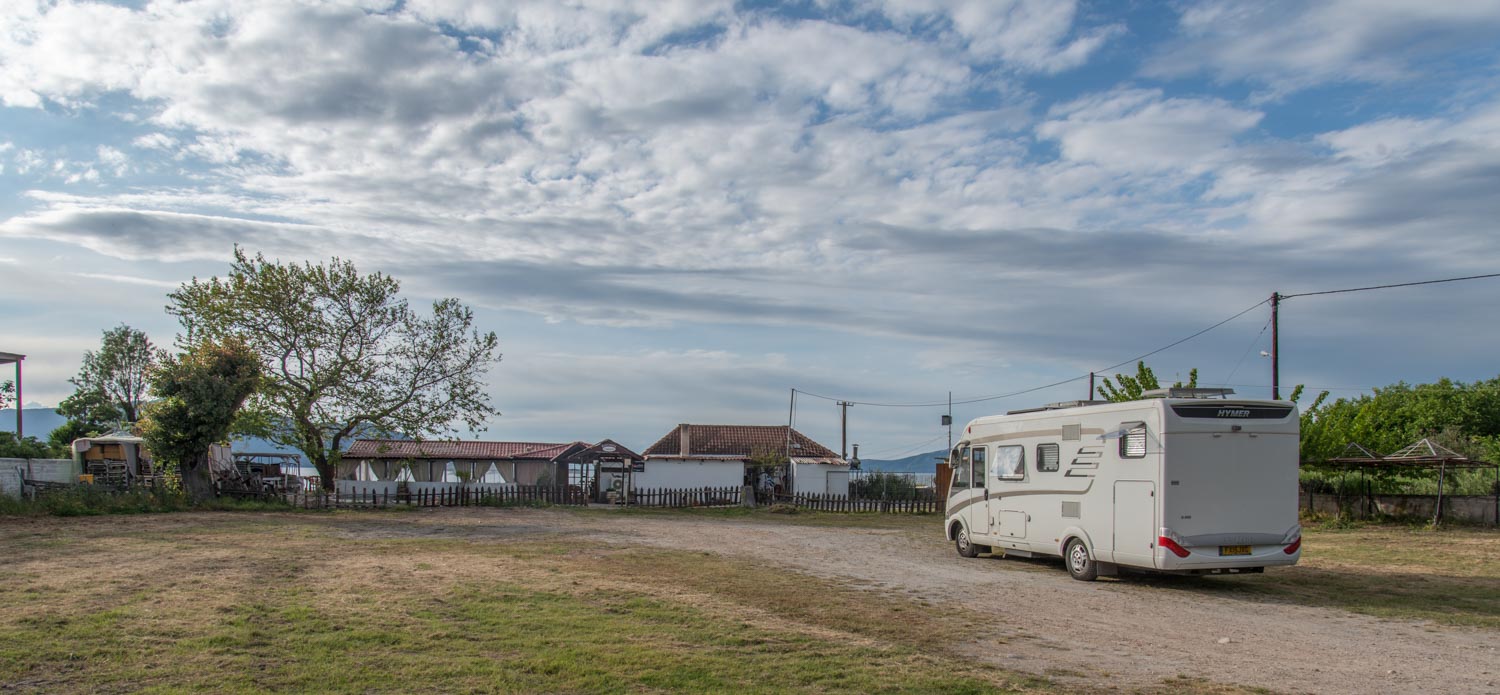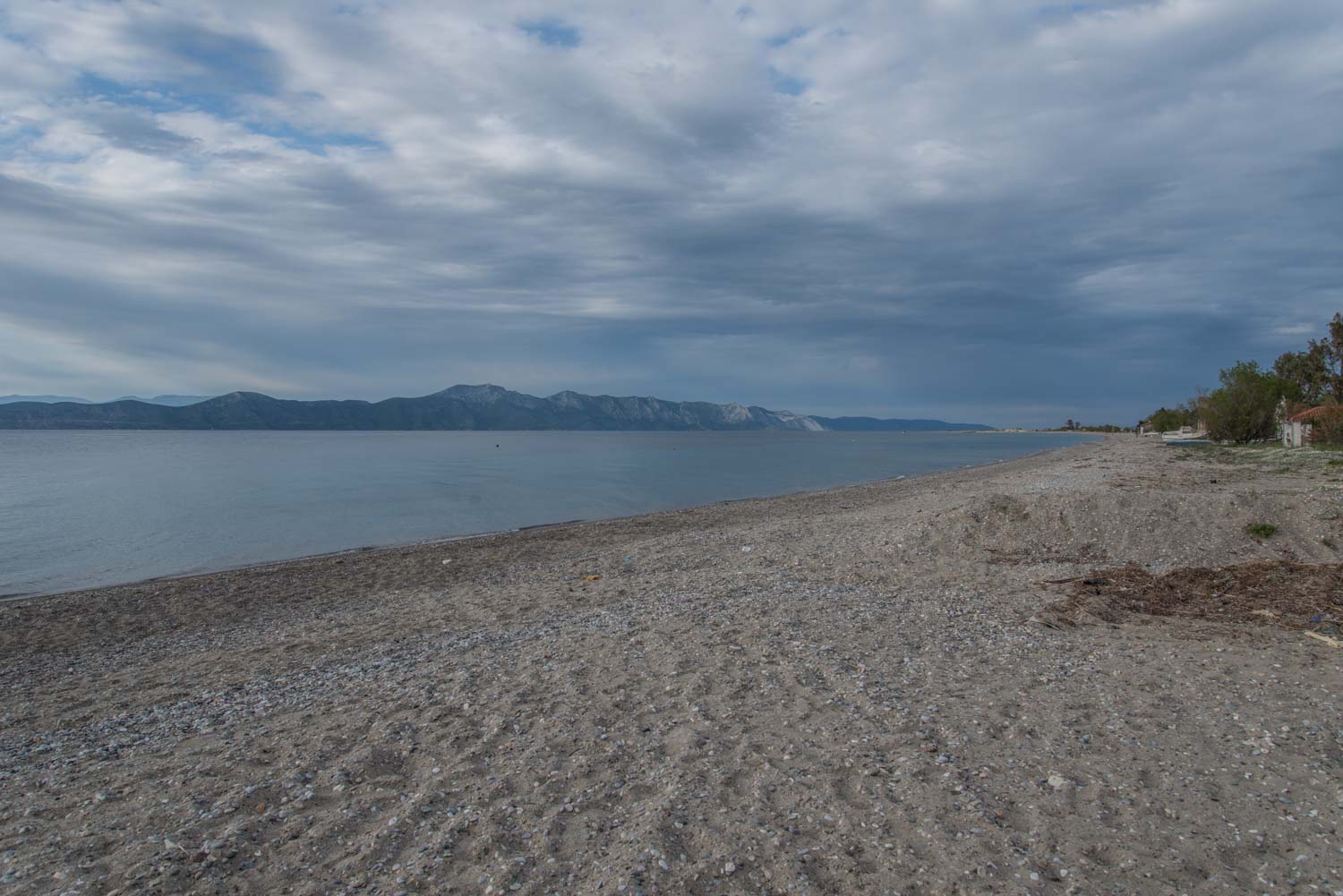Our overnight spot proved to be peaceful enough but there was nothing to keep us and with nowhere to empty our cassettes we would have to find a campsite after one more night of wildcamping.
The island of Evia does not have any specific attractions, except its beaches and scenery and so we decided to drive from the Southeast to the Northwest coasts, across the not inconsiderable mountains. Evia is mountainous, just like most of Greece and in fact there is a ski resort in the island’s highest area.
The road over the highlands proved to be one of Greece’s better efforts, although there were the usual unending sequence of hairpin bends both going up and coming down, together with a few villages where the road builders had been unable to do anything without tearing down houses and which caused Basil to tighten his corsets on a few occasions.
Today’s highlights, apart from the ubiquitous wild flowers, were beehives. In Greece beehives are not a uniform size or colour, but of various shapes, sizes and colours. They are left in large collections, in this case all over the forested mountain slopes. There were no stalls selling the end product but truth be told we still have some honey left at home from our trip in 2017!
Also in the mountains we came across a fire engine parked in a small forest clearing with the fireman sitting with his feet up next to his vehicle. I suspect the island’s forests are a big fire hazard during the summer and he had been located to give him an opportunity to reach a wildfire more quickly than if he had been at his station on the coast.
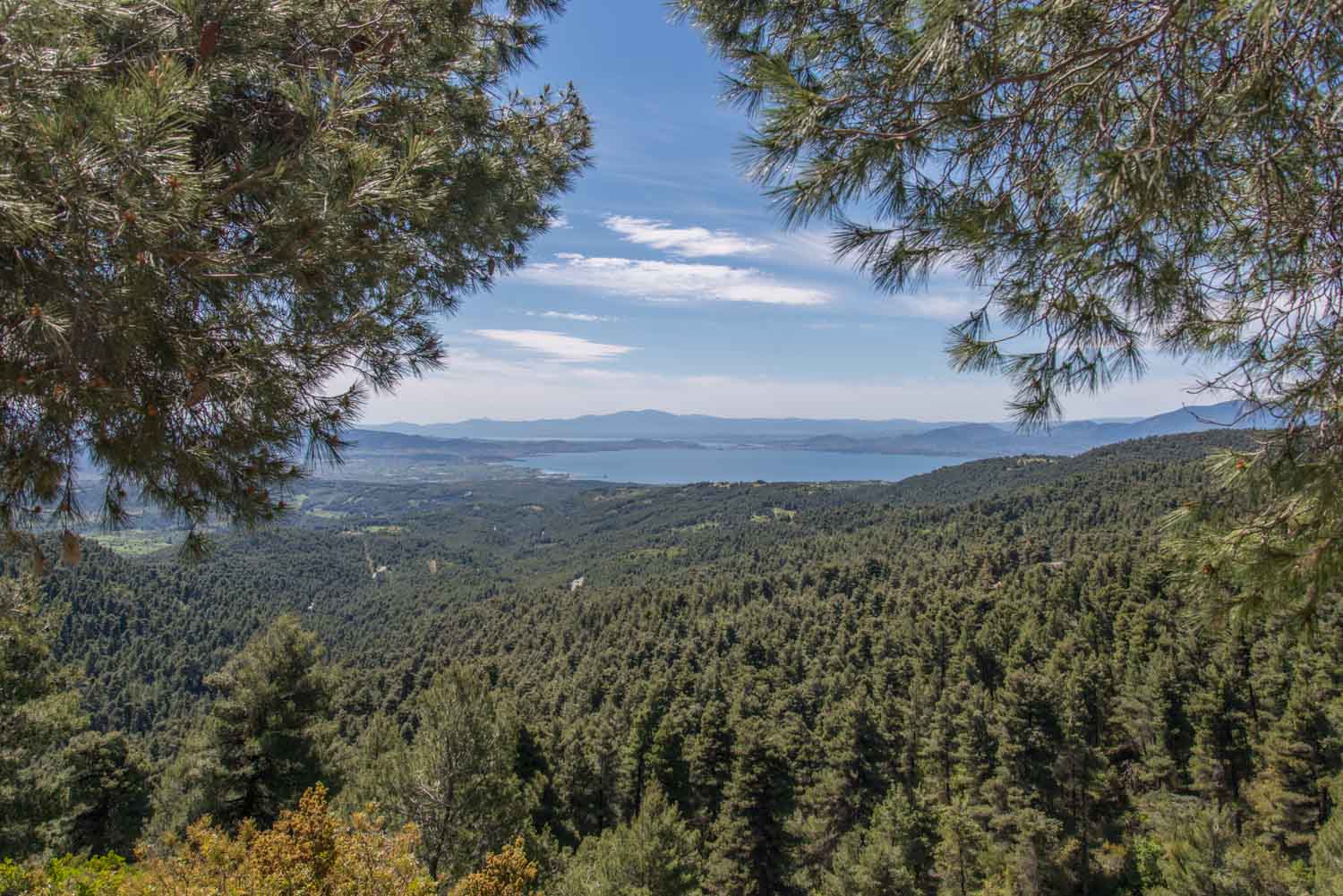
For the first part of our journey we were constantly aware of a large, isolated, snowcapped mountain which was nearly always in view. This is Dirfi, the island’s highest mountain at 1,743 metres (5,700 feet). It still looks odd to us to see so much snow in a country where the temperature is now in the late 20s centigrade.
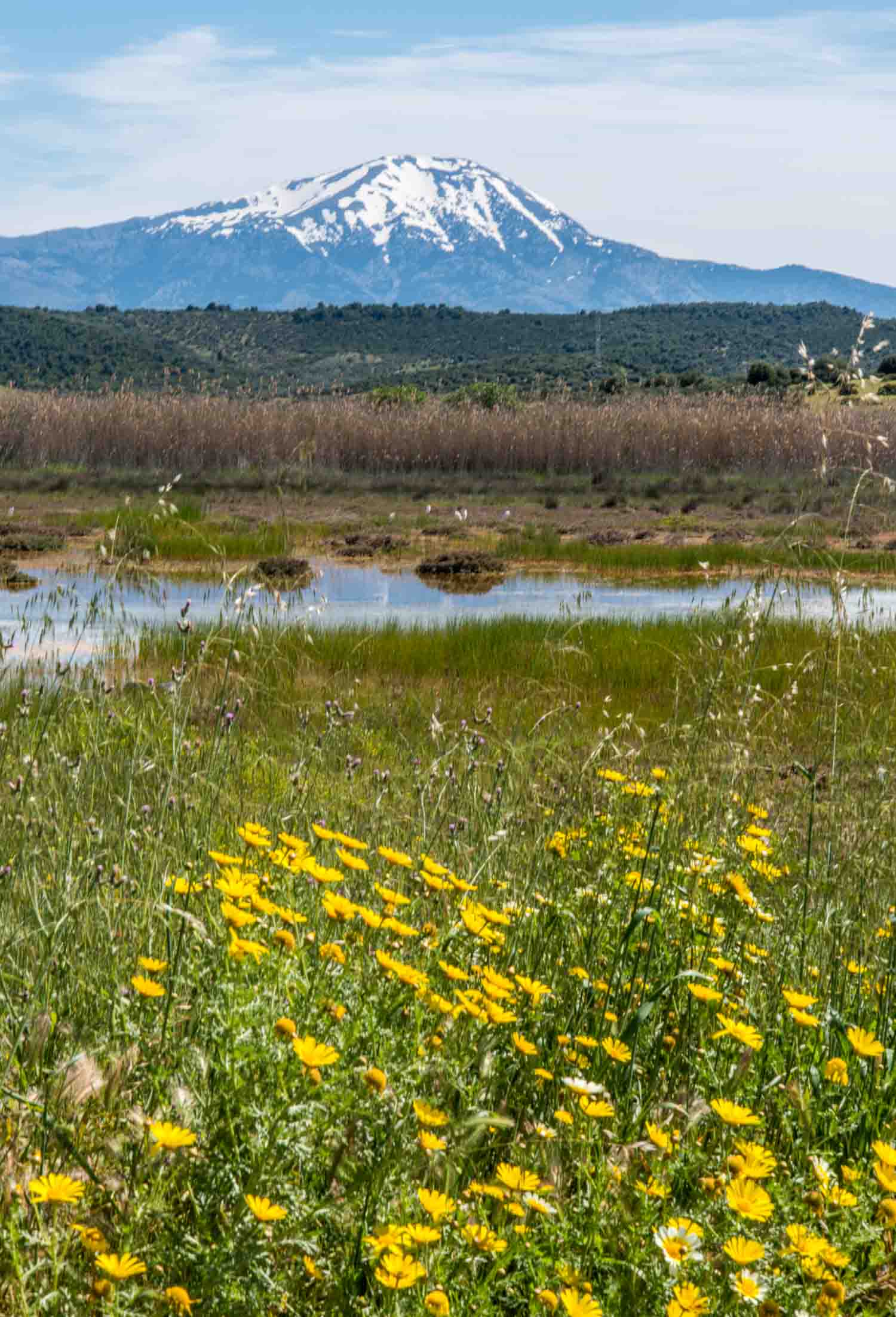
Throughout the mountain forests many of the pine trees were scarred by resin extraction. A plastic bag is placed over an incision in the tree and resin then collects in the bag awaiting harvest. We don’t know to what use the resin is put, but it could be used in Greece’s famous wine, Retsina. This wine is said to originate from the Roman practice of sealing wine bottles with Pine Resin and people so enjoying the resinated flavour that the style of wine has remained popular for over 2,000 years.
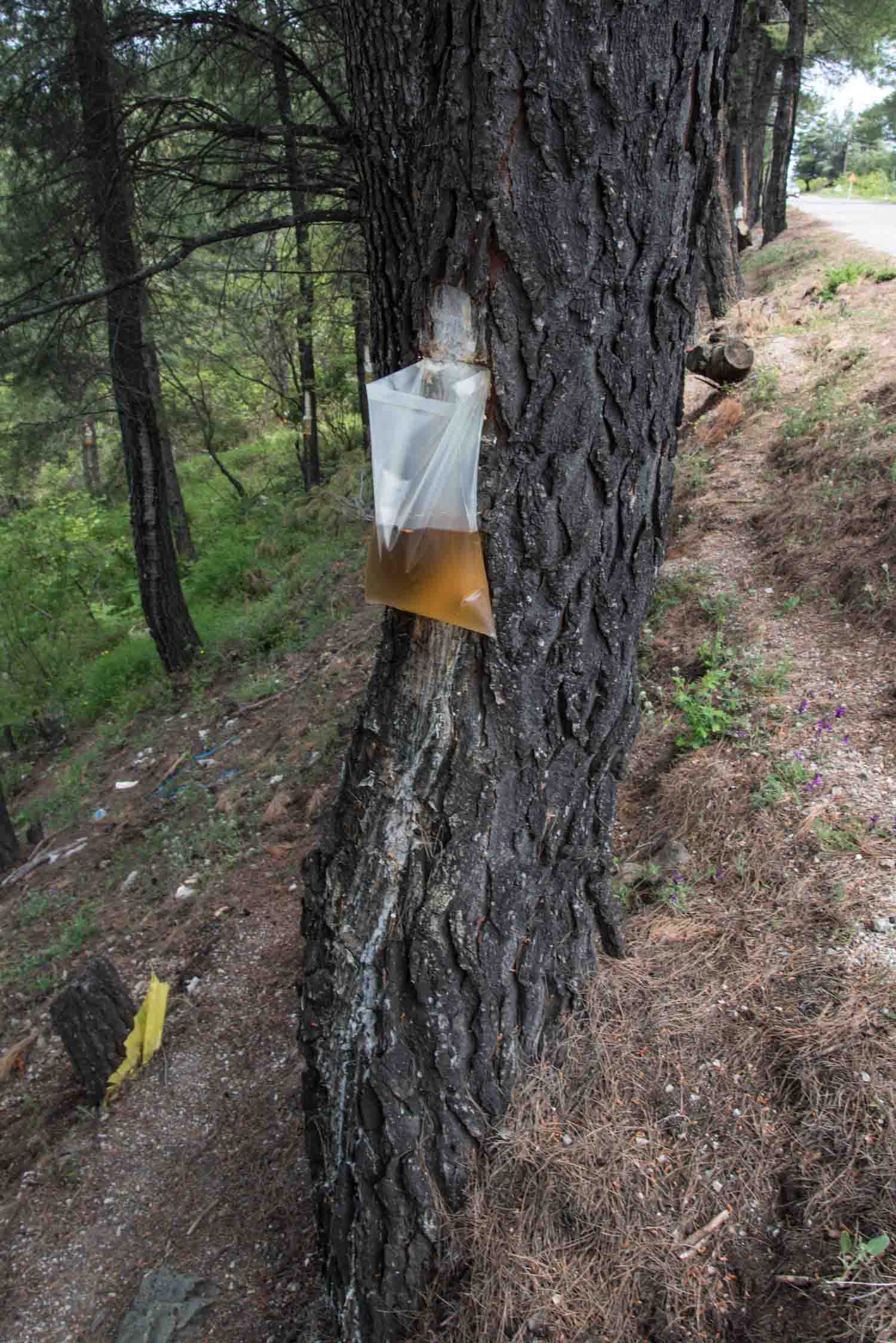
We finally dropped down to the coast in the north west of the island and made for a little restaurant which I had read on line offered a free overnight stop if you ate lunch at their establishment. When we arrived it was fairly full of Greeks, with not a camper in site, but the owners were very welcoming and made us aware that they were trying to establish the restaurant as a camper stop.

The restaurant called Bekatsas (38.994158, 23.114911), in the tiny hamlet of Kanatadika, is set on the waters edge with a view from Evia over to the Greek mainland, including the Pelion peninsular where we are heading tomorrow. There was no menu just a few Greek favourites and we had a Greek salad together with fried shrimp and anchovies.

Considering everyone at the restaurant was driving there were prodigious amounts of what looked like Ouzo being drunk. I asked the waiter whether it was Ouzo and found out that it was in fact something called Tipolo, a spirit flavoured with a local herb. I, of course, had to try one and it was actually rather nicer than Ouzo with the herb complimenting the still present licorice taste.
We are now alone on the restaurant’s back lawn with everyone, including the owners, gone. They don’t open in the evenings at this time of year, so we will have the place to ourselves this evening. There is a toilet for us to use and they have left their wifi on for us to log into.
